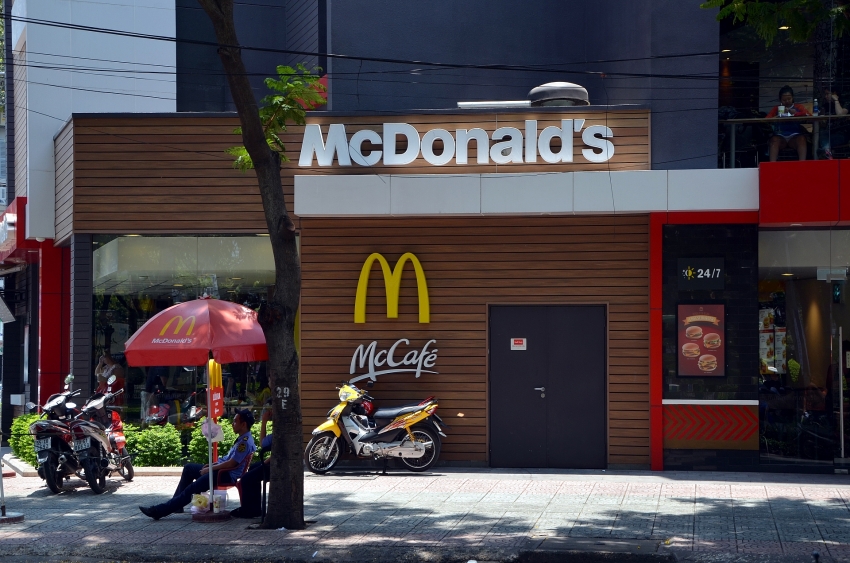McDonald's and Burger King falling short of ambitions in Vietnam
 |
| Hamburgers are apparently not so appealing in Vietnam (Source: Shutterstock) |
At the launch of its first restaurant in Vietnam in 2014, McDonald’s expected to reach 100 stores in Vietnam within 10 years. However, after four year it only has 16 stores across the country. Burger King, similarly, managed to open 11 stores in total in seven years of operations in the country, despite its initial target of opening 60 stores across the country in 2012-2017.
According to market research company Kantar Worldpanel western fast food simply does not suit the palates of the majority of Asian people. However, the two global fast food giants are blossoming in Japan and China, both of which are famous for their traditional cuisines.
Accordingly, Burger King opened 700 stores in China by 2016 and has 98 outlets in Japan currently. McDonald’s also has 2,500 stores in China and 2,975 stores in Japan.
So, what is the problem in Vietnam, a market that for all intents and purposes should be identical to other Asian markets?
Many experts stated that Western fast food could easily succeed in other countries thanks to its appeal of being fast and easy to take away, which is completely suitable for the fast-paced life in many countries. This would also explain the success of the two giants in Japan and China.
In Vietnam, a country famous for its diverse street food, a good variety of reasonably priced food is always within reach, which negates McDonald’s and Burger King’s primary advantages.
CNBC.com quoted Hao Tran, co-founder of Vietcetera, as saying: “Fast food in the US is popular because you can easily take it with you on the go. In Vietnam, if you need the same thing, you can go to the street vendors to get a bowl of pho or banh mi. It’s faster than McDonald’s, so their speed has no value in Vietnam.”
According to data from the European Commission, Vietnamese people spend the majority of their income on food, including 78 per cent on street food, and just one per cent on fast food.
Vietnam has 540,000 food stores, including 430,000 street vendors, 80,000 restaurants, 22,000 cafes and bars, and only 7,000 fast food stores. CNBC.com states that the variation in the number of food stores in Vietnam partly come from historical factors.
Accordingly, 20 years after the war’s end, fast food brands started to appear in the country, when the food business in Vietnam was already developed and diversified. From the time, many food stores are private houses, where they use the upper floors as living space and sell food on the ground floor.
Furthermore, while the US consumers tend to select their own meal in fast food stores whether they go alone or in a group, Vietnamese people prefer family-style food vendors to eat the same dishes together. Therefore, dishes that can be shared are more culturally compatible with Vietnamese consumers and will hold the upper hand.
What the stars mean:
★ Poor ★ ★ Promising ★★★ Good ★★★★ Very good ★★★★★ Exceptional
Related Contents
Latest News
More News
- Ho Chi Minh City hits $8.37 billion in FDI (December 29, 2025 | 08:28)
- Tax sector wraps up 2025 and sets priorities for next year (December 25, 2025 | 14:00)
- Heavy industries set for pilot greenhouse gas quotas (December 25, 2025 | 10:00)
- $250 million deal targets women-owned SMEs, sustainable agriculture (December 22, 2025 | 17:40)
- UOB sees Vietnam growth easing in fourth quarter (December 22, 2025 | 17:39)
- Government moves to establish International Financial Centre (December 21, 2025 | 21:00)
- Vietnam's IFC to target global investment flows (December 21, 2025 | 18:00)
- Ha Tinh breaks ground on major Vingroup industrial and energy projects (December 19, 2025 | 18:24)
- EVN launches major power infrastructure projects nationwide (December 19, 2025 | 18:17)
- VAL inaugurates second production line to meet domestic animal feed demand (December 19, 2025 | 16:37)

 Tag:
Tag:

























 Mobile Version
Mobile Version